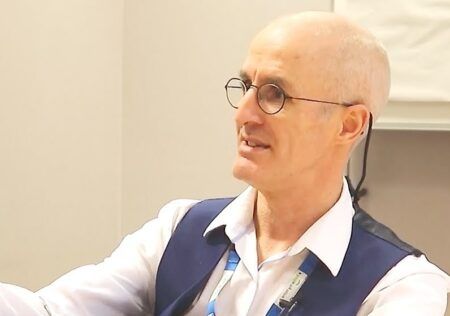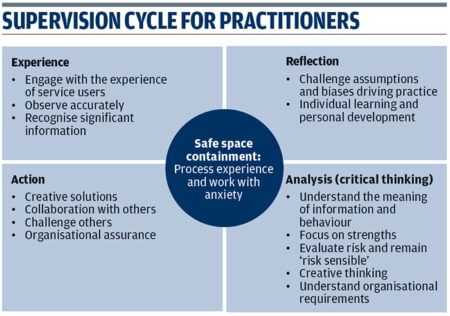Home News & Views Approaches to Supervision
Approaches to Supervision
 Kenny Gibson, Deputy Director for NHS Safeguarding
Kenny Gibson, Deputy Director for NHS Safeguarding
These are many approaches to supervision including clinical, educational and managerial supervision. All have a slightly different focus but complement and overlap each other in many ways. In general, however, supervision in the healthcare professions is about ensuring patient safety and promoting professional development in the practitioner or trainee.
Resilience-based Clinical Supervision (RBCS) is a form of restorative clinical supervision which focuses on the ‘emotional systems motivating the response to a situation’ and includes elements of mindfulness-based exercises with a view to ‘enhancing wellbeing, resilience and improving care’. (Foundation of Nursing Studies).
RBCS is a facilitated reflective discussion, characterised by:
- Co-creating a safe space
- Integrating mindfulness-based stress-reduction exercises
- Focusing on the emotional systems motivating our response to a situation
- Considering the role of our internal critic in sustaining or underpinning our response to a situation
- Maintaining a compassionate flow to self and consequently to others
Evaluation of the impact of RBCS suggests that it can help individuals to develop an increased awareness of the importance of self-care and question organisational practices which impact negatively on staff (including their own) and patient wellbeing.
 Restorative clinical supervision aims to support the needs of staff working with clinically complex caseloads and/or in roles which are emotionally demanding. When professionals undertake complex clinical work, they may move between feelings of anxiety, fear or stress. This may impact on their ability to think clearly and to process information quickly and accurately when making decisions. It may also lead to compassion fatigue and burnout (NES, 2018; The Centre for Victims of Torture, 2019).
Restorative clinical supervision aims to support the needs of staff working with clinically complex caseloads and/or in roles which are emotionally demanding. When professionals undertake complex clinical work, they may move between feelings of anxiety, fear or stress. This may impact on their ability to think clearly and to process information quickly and accurately when making decisions. It may also lead to compassion fatigue and burnout (NES, 2018; The Centre for Victims of Torture, 2019).
According to Wallbank (2012) if professionals can process their feelings of stress, anxiety and fear, and have the ‘mental time and space’ to reflect upon and discuss these in a safe and supportive environment, as in clinical supervision, it may alleviate some of the stress and anxiety experienced. This then facilitates practitioners to focus on their own learning needs and development regarding practice-based issues and move upwards into the creative, energetic and solution focused zone of the Restorative Clinical Supervision model (Wallbank, 2012). In this zone, professionals are better able to find their own solution to practice challenges and develop their personal and professional resilience.
The restorative model of clinical supervision is recognised as an approach to support reflective practice that can help build practitioners’ resilience by focusing on the individual’s (supervisee’s) experience, aiming to sustain their wellbeing and their motivation at work. This is achieved through guided reflection, exploratory questioning and supportive challenge, enabling a focus on action planning and goal setting. Restorative clinical supervision offers practitioners the opportunity to regularly discuss the positive aspects of their work which is as important as exploring those issues they find more challenging.
There is the A-EQUIP (Advocating and Educating for QUality ImProvement) model of professional nursing leadership and clinical supervision, and provides guidance on their implementation, including key actions for each relevant group. this has been around since it was rolled out as the model of support for midwives in England since 2017, replacing statutory supervision. The non-regulatory but important supportive aspect of supervision will continue, focusing on restoration, revalidation and education. As a result, the supervisor of midwives role has been replaced by the professional midwifery advocate (PMA). The A-EQUIP model provides a framework for PMAs to deliver support and clinical supervision to midwives, through interventions such as restorative clinical supervision. Providing restorative clinical supervision is explored further in this article, to critically reflect on the beneficial outcomes for midwives facing extreme pressures and the care that women receive.
What ever our role, what ever your chosen approach to supervision, we all need restored.
We’d like to thank Kenny for allowing us to share this blog.
Comments are closed.

